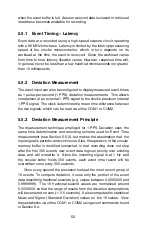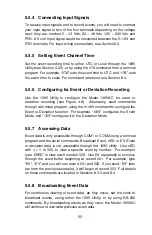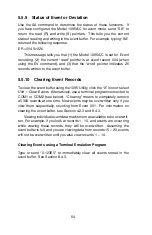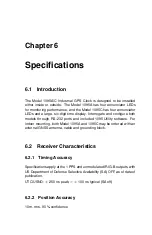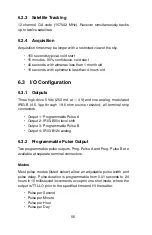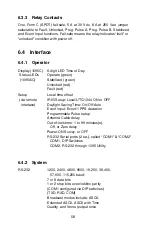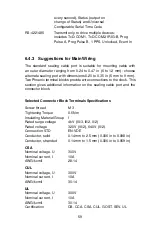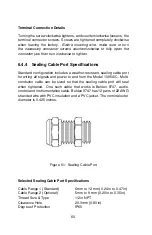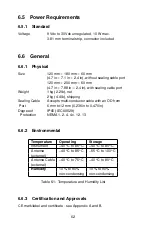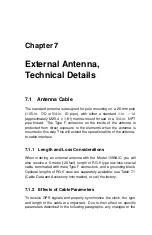
Another method is to determine the lumped impedance of all of
the connected IED’s in parallel. Then, determine the overall current
by dividing the drive voltage (5 V) by the computed lumped impedance
value. This current should not exceed 250 mA.
5.4.5
Connecting Modulated IRIG-B
The total load capacity for the modulated IRIG-B driver depends on the
type and number of loads. The main difference in computing the load
capacity for modulated IRIG-B and unmodulated IRIG-B is that many of
the modulated IRIG-B decoders are fairly sensitive to the peak-to-peak
voltage. With greater load capacity, the clock’s modulated driver pro-
duces more current, which passes through the internal source resister,
dropping the available output voltage. The open circuit voltage (i.e. with
no loads) is approximately 4.5 Vpp, so any connected loads will cause
the available voltage to drop. It is a simple task to compute the available
output voltage (Vpp) with a known current. See Calculation 5.2.
(5.2)
V pp
= 4
.
5
V pp
−
I
×
19
.
6
Ohms
(
source resistance
)
Therefore, if you had 10 mA of load current (I load) the available
voltage (Vpp) would be 4.304 Vpp. If the load current equals 100 mA,
then the available voltage would be 2.54 Vpp. So, you can see how
increasing the load current (i.e number of loads) affects the available
drive voltage at the clock output. See also Table 5.1.
5.4.6
Wire Losses
Wire losses affect the available timing signal voltage applied to the
device receiving the signal. Wire has a certain resistivity associated
with it that is determined by its metallic composition, and its resistance
determined by the diameter and length. For example, single-strand, 22
AWG (bare, enamel-coated) copper wire has a resistance of approxi-
mately 19.6 ohms per 1000 feet. To compute the loss we must include
both wires in the connection, signal and return. For coaxial cabling, the
resistance of the center conductor is rated differently than the shield. For
a twisted pair, both of them should essentially have the same resistance
per cut length. If we use a twisted pair of 22 AWG (copper as above),
then the available voltage (at 100 mA of current) for 500 feet of wire
including the source resistor is calculated in 5.3:
(5.3)
V pp
= 4
.
5
−
I
×
19
.
6
source
−
I
×
19
.
6
wire
= 0
.
58
V pp
49


















